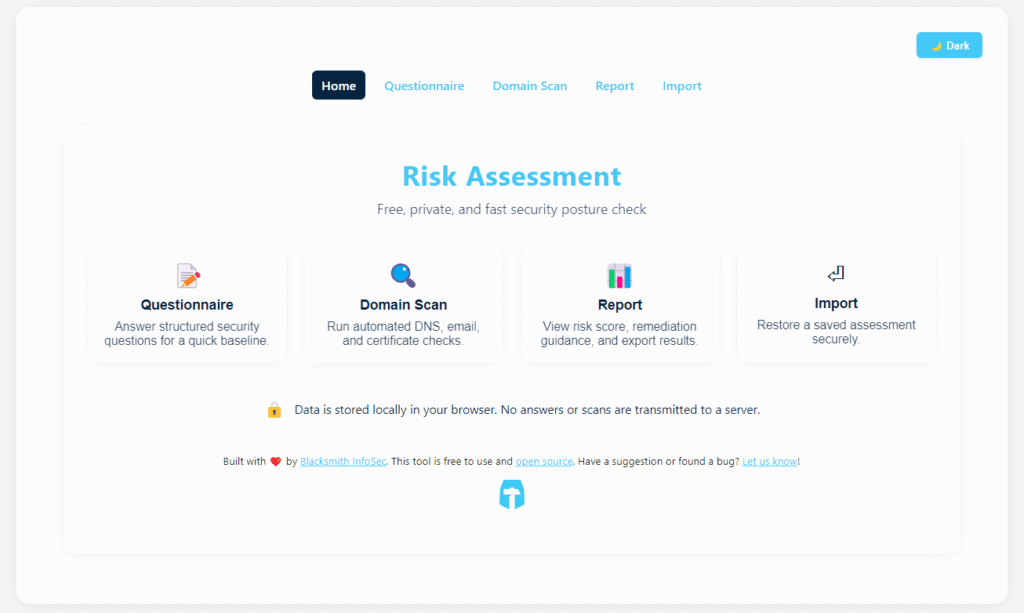In an era defined by relentless cyber threats and increasingly stringent regulations, Managed Services Providers (MSPs) find themselves at the heart of a digital battleground. The frequency and sophistication of cyberattacks continue to surge, while governments and industries worldwide impose tighter compliance requirements to safeguard sensitive data and critical infrastructure. This dual pressure — cyber risk on one side, regulatory scrutiny on the other — has thrust MSP compliance into the spotlight as a cornerstone of modern IT operations.
For MSPs, compliance is no longer just a box to check or a means to mitigate risk. It has emerged as a strategic business imperative that shapes client trust, operational resilience, and competitive advantage. In 2025, robust MSP compliance frameworks are essential not only for protecting client assets and avoiding penalties, but also for driving growth, building reputation, and securing long-term partnerships in an increasingly complex digital world.
Understanding MSP Compliance and CaaS — MSP Compliance Defined
What Is MSP Compliance?
At its core, MSP compliance refers to the processes, policies, and standards that Managed Services Providers follow to ensure their operations — and those of their clients — adhere to legal, regulatory, and industry requirements. For MSPs, compliance is not just about following rules; it’s about understanding how their actions directly affect the security posture and risk profile of every organization they serve. When MSPs implement strong compliance measures, they help clients avoid costly breaches, regulatory fines, and reputational damage.
Compliance is important both internally and when providing Compliance-as-a-Service (CaaS) to your clients.
The Expanding Regulatory Landscape
Today’s MSPs must contend with a rapidly evolving regulatory environment. Key regulations such as the Health Insurance Portability and Accountability Act (HIPAA), Cybersecurity Maturity Model Certification (CMMC), and ISO 27001 set the bar for data protection, privacy, and cybersecurity across industries. Each standard comes with its own set of requirements, and MSPs are often responsible for ensuring their clients meet these obligations — especially when sensitive data is involved.
“MSPs must understand that compliance is not just about adhering to standards; it is about safeguarding their clients’ assets, reputation, and their own future.” — Charles Weaver via MSP Alliance
The Role of MSPs in Ensuring Client Adherence
MSPs serve as advisors and technical experts, navigating clients through the maze of compliance requirements. From conducting risk assessments to implementing security controls and documenting processes, they play a pivotal role in helping organizations prove their compliance to auditors, regulators, and business partners. By staying current with regulatory changes and industry best practices, MSPs not only protect their clients but also strengthen their own credibility and market position.

The Critical Role of MSPs in Cybersecurity and Compliance
MSPs as Guardians of Digital Assets
Managed Services Providers are the front line of digital defense, entrusted with the security and integrity of their clients’ IT environments. In an age where cyber threats such as ransomware, phishing, and advanced persistent threats (APTs) are both frequent and sophisticated, MSPs must be vigilant in monitoring, protecting, and responding to incidents. Their role extends far beyond routine maintenance — MSPs are responsible for implementing security controls, managing access, and ensuring that sensitive data remains confidential and available.
Use Case Examples of MSPs Preventing Breaches Through Compliance
There are many benefits to using an MSP for compliance services. An MSP that proactively enforces multi-factor authentication (MFA), regularly patches vulnerabilities, and monitors network traffic can prevent unauthorized access and mitigate potential breaches. An MSP’s adherence to strict data encryption standards and regular compliance audits can help a healthcare client avoid a costly HIPAA violation. These examples underscore that MSP compliance is not just about avoiding penalties — it’s about actively safeguarding clients from harm.
Industry-Specific Compliance Challenges
Different industries face unique compliance demands, and MSPs must adapt their strategies accordingly. For example:
-
Healthcare: HIPAA compliance requires strict controls around protected health information (PHI), including data encryption, access controls, and thorough documentation.
-
Finance: Regulations such as PCI DSS (Payment Card Industry Data Security Standard) mandate secure handling of payment data and regular security assessments.
-
Education: FERPA (Family Educational Rights and Privacy Act) governs student data privacy, requiring MSPs to implement safeguards and monitor access.
How MSPs Tailor Compliance Solutions for Diverse Clients
No two organizations are alike, and neither are their compliance needs. MSPs must assess each client’s industry, regulatory environment, and business objectives to develop tailored security and compliance programs. This often involves:
-
Conducting thorough risk assessments to identify vulnerabilities and compliance gaps.
-
Customizing security policies and procedures to meet specific regulatory requirements.
-
Providing ongoing training and support to ensure client staff understand their roles in maintaining compliance.
-
Offering scalable solutions that grow with the client’s needs and evolving threats.
By taking a proactive and client-centric approach, MSPs not only enhance security but also build trust and long-term partnerships — making MSP compliance a cornerstone of modern managed service delivery.
The MSP Compliance Ecosystem: Risks and Requirements
Key Risks Managed by Compliance
Managed Services Providers operate within a complex web of risks that can have far-reaching consequences for both them and their clients. MSP compliance frameworks and policies are (or ideally should be) the foundation that helps navigate these risks, ensuring that security and legal standards are met.
-
Cybersecurity Risks:
-
Ransomware, data breaches, and insider threats are among the most pressing concerns.
-
A single incident can result in data loss, financial damage, and disruption of business operations.
-
Compliance-driven security measures, such as regular vulnerability assessments, endpoint protection, and incident response planning, are essential for minimizing these threats.
-
-
Regulatory Risks:
-
Non-compliance with laws like GDPR, HIPAA, or CMMC can lead to substantial fines, legal action, and loss of business licenses.
-
MSPs must keep abreast of changing regulations and ensure their clients’ systems are always audit-ready.
-
-
Reputation Risks:
-
Trust is paramount in the MSP-client relationship.
-
A security incident can quickly erode client confidence and damage an MSP’s brand, making it harder to win new business or retain existing clients.
-
-
Insurance Risks:
-
Cybersecurity insurance is increasingly common, but policies often require strict adherence to compliance standards.
-
Failure to meet these standards can result in denied claims, leaving MSPs and their clients exposed to unexpected financial losses.
-
Compliance Drivers
Several factors compel MSPs to prioritize compliance:
-
Client Demands and Contractual Obligations:
-
Clients are increasingly aware of compliance requirements and expect their MSPs to help them meet these standards.
-
Contracts often include clauses mandating compliance with specific regulations or security frameworks.
-
-
Insurance Provider Requirements:
-
Insurers may require evidence of compliance with recognized standards before offering coverage or processing claims.
-
-
Industry Certifications and Audits:
-
Certifications such as ISO 27001, SOC 2, and NIST CSF demonstrate an MSP’s commitment to security and compliance.
-
Regular audits help identify gaps and ensure continuous improvement.
-
Navigating the Complexities of Compliance
The MSP compliance ecosystem is dynamic, with new threats and regulations emerging regularly. MSPs must adopt a proactive stance, staying informed about industry trends, regulatory updates, and best practices. By integrating compliance into every aspect of their operations, MSPs can not only mitigate risks but also differentiate themselves in a competitive market.
Building a Robust MSP Compliance Framework
To thrive in today’s world of regulations and cybersecurity, Managed Services Providers must go beyond checkboxes or performative compliance — they need to implement a comprehensive, scalable compliance framework that adapts to both client needs and evolving threats. Here’s how MSPs can build and maintain such a framework:
Step 1: Compliance Assessment and Gap Analysis
Start with a thorough evaluation of your current practices.
Conduct a gap analysis to compare your existing security controls and policies against relevant industry standards and regulatory requirements. Identify areas where your MSP falls short and prioritize improvements based on risk and client impact.
Step 2: Developing Tailored Compliance Plans
One size does not fit all in MSP compliance.
Create customized compliance plans for each client, considering their industry, regulatory obligations, and business objectives. Establish a baseline framework that applies across all clients but be prepared to adapt and enhance your approach for those with more sophisticated needs.
Step 3: Ongoing Training and Awareness
Empower your team with continuous education.
Regular training ensures that staff stay current on the latest compliance standards, cybersecurity threats, and best practices. Encourage certifications and provide resources to help your team confidently address client compliance challenges.
Step 4: Vendor and Partner Collaboration
Leverage the expertise and solutions of trusted vendors.
Build strong relationships with technology partners like Blacksmith Infosec who specialize in the critical role of compliance management in the MSP space. Their solutions can help automate compliance tasks, streamline reporting, and strengthen your overall security posture.
Step 5: Continuous Monitoring and Improvement
Compliance is not a one-time event — it’s an ongoing process.
Implement tools for real-time monitoring of security controls, policy adherence, and regulatory changes. Regularly review and update your compliance framework to address new threats, client requirements, and industry standards.
Step 6: Expert Consultation and Third-Party Audits
When in doubt, seek external validation.
Engage cybersecurity and compliance experts for guidance, especially when facing complex regulations or preparing for audits. Third-party audits provide an objective assessment of your compliance status and help build trust with clients and stakeholders.
Best Practices for MSP Compliance Success
Achieving and maintaining MSP compliance requires more than just following a to-do list — it demands a proactive, strategic approach that is woven into the fabric of daily operations. Below are proven best practices that can help MSPs excel in CaaS and set themselves apart:
Prioritizing Communication and Transparency
Open lines of communication with clients and stakeholders are vital.
Regularly update clients on your compliance status, security posture, and any changes in regulations that may affect them. Transparent reporting builds trust and demonstrates your commitment to safeguarding their interests. Consider creating compliance dashboards or reports that provide clear, actionable insights for clients.
Automation and Compliance Management Tools
Leverage technology to streamline compliance efforts.
Utilize compliance-as-a-service (CaaS) management platforms and automation tools to simplify documentation, monitoring, and reporting. These solutions can help MSPs track policy adherence, manage audit trails, and respond more quickly to regulatory changes. Automation also reduces the risk of human error and frees up your team to focus on higher-value tasks.
Staying Ahead of Emerging Threats
Compliance is not static — threats and regulations evolve constantly.
Stay informed about new cybersecurity risks, regulatory updates, and industry trends. Participate in industry forums, subscribe to compliance newsletters, and engage with professional associations to ensure your MSP remains at the forefront of compliance best practices.
Building a Culture of Compliance
Make compliance a shared responsibility across your organization.
Encourage every team member to take ownership of compliance by integrating it into job roles, performance metrics, and company values. Foster a culture where security and compliance are seen as everyone’s business, not just the responsibility of a dedicated team.
Regular Review and Continuous Improvement
Periodically assess and refine your compliance framework.
Conduct internal audits, solicit feedback from clients, and review incident response plans to identify areas for improvement. Continuous improvement ensures that your MSP remains resilient in the face of new challenges and maintains a strong reputation for reliability and security.
The Future of MSP Compliance
Managed Services Providers must anticipate and adapt to emerging trends that will shape the future of MSP compliance. Staying ahead of these changes is not just about risk management — it’s about seizing opportunities to differentiate your business and deliver greater value to clients.
Predictions for Regulatory Evolution
Regulatory frameworks will grow increasingly complex and global in scope.
Expect more stringent data privacy laws, expanded cybersecurity requirements, and cross-border regulations that impact how MSPs operate across jurisdictions. Governments and industry bodies are likely to introduce new mandates in response to high-profile breaches and technological advancements, such as artificial intelligence and cloud computing. MSPs will need to monitor these developments closely and be prepared to adjust their compliance strategies accordingly.
The Growing Importance of Certification and Accreditation
Certifications will become a key differentiator in the MSP marketplace.
Clients, insurers, and partners are placing greater emphasis on third-party validation of security and compliance practices. Certifications like ISO 27001, SOC 2, and CMMC not only demonstrate your commitment to best practices but also open doors to new business opportunities. MSPs that invest in obtaining and maintaining recognized certifications will gain a competitive edge and build stronger trust with stakeholders.
The Competitive Advantage of Compliance
Compliance is shifting from a cost center to a business enabler.
Forward-thinking MSPs are leveraging their robust compliance programs as a marketing tool, showcasing their ability to protect client assets and navigate complex regulatory environments. By integrating compliance into their core value proposition, MSPs can attract clients who prioritize security and risk management, command higher fees, and foster long-term loyalty.
Embracing Technology and Innovation
Advanced technologies will play a larger role in compliance management.
Automation, artificial intelligence, and machine learning will help MSPs monitor compliance in real time, detect anomalies, and respond to incidents more effectively. Cloud-based compliance platforms and managed detection and response (MDR) services will enable MSPs to scale their offerings and provide clients with greater visibility and control over their security posture.
Looking ahead, MSP compliance will remain a dynamic and essential aspect of managed services. By staying informed, investing in certifications, and embracing innovation, MSPs can turn compliance challenges into opportunities for growth, differentiation, and lasting success.
MSP Compliance as a Business Enabler
MSP compliance is far more than a regulatory obligation — it’s a powerful driver of trust, reputation, and business growth. As cyber threats multiply and regulations grow more complex, MSPs that prioritize compliance are better positioned to protect their clients, reduce risk, and differentiate themselves from competitors.
Compliance is not a cost center; it’s a strategic asset.
By embedding compliance into every aspect of their operations, MSPs can demonstrate their commitment to security and reliability, earning the confidence of clients, partners, and insurers. This trust translates into stronger relationships, increased retention, and access to new business opportunities.
The path forward is clear: embrace compliance as a core competency.
Invest in ongoing education, leverage advanced technologies, and seek third-party validation through certifications and audits. Stay agile and proactive, anticipating changes in the regulatory landscape and adapting your strategies accordingly.
Wrapping It Up
MSPs should view compliance not as a burden, but as a foundation for long-term success. By making compliance a central part of your mission, you can safeguard your clients and reputation while earning your place as a trusted leader in the managed services industry. Now is the time to act — turn compliance into your competitive advantage and shape the future of your business.



